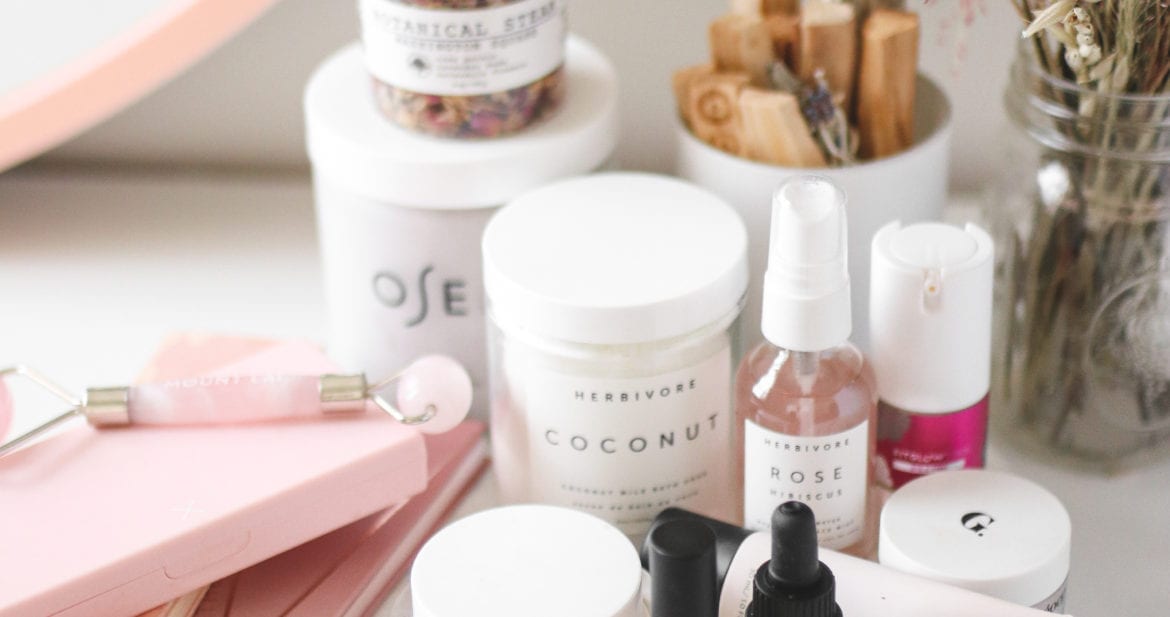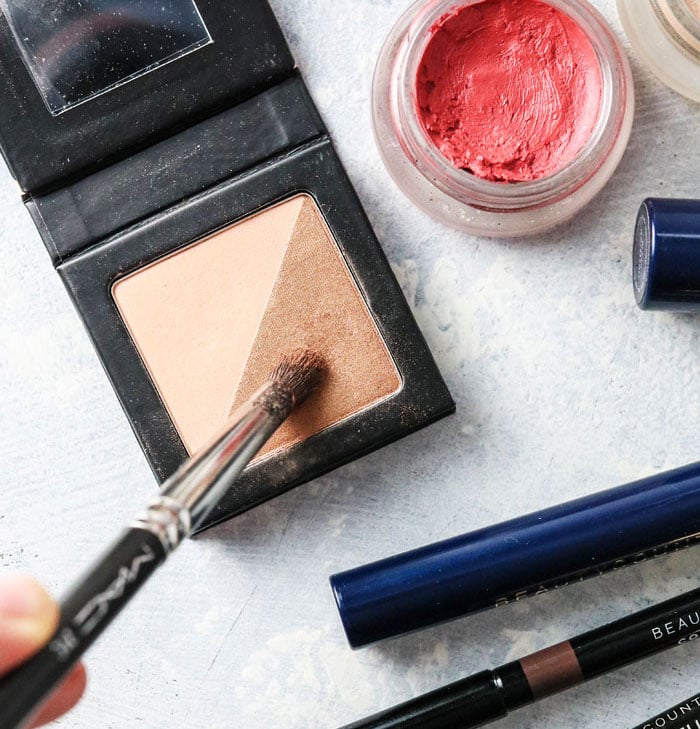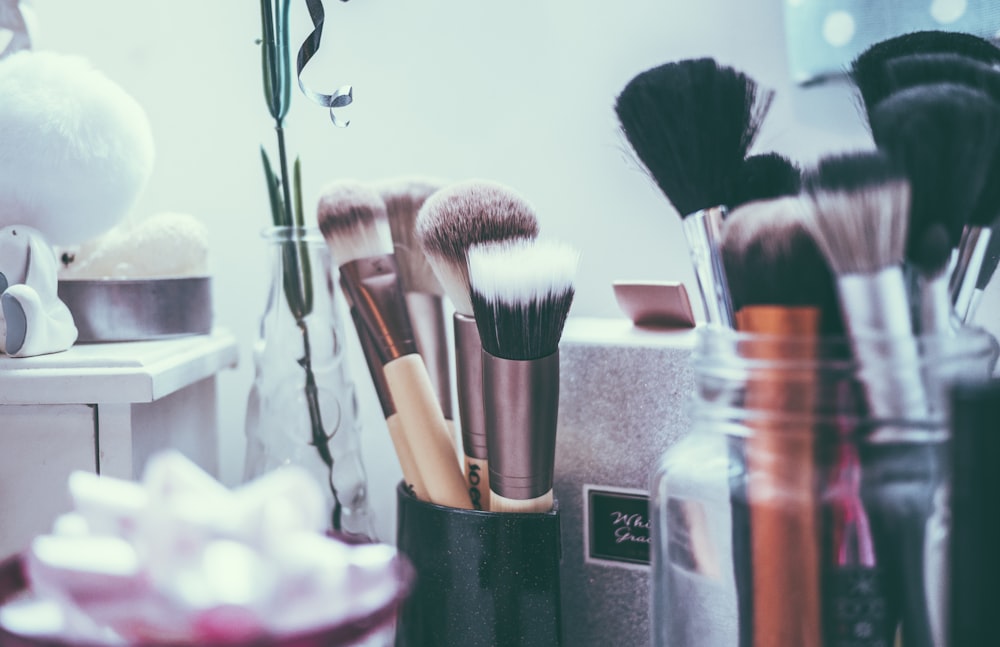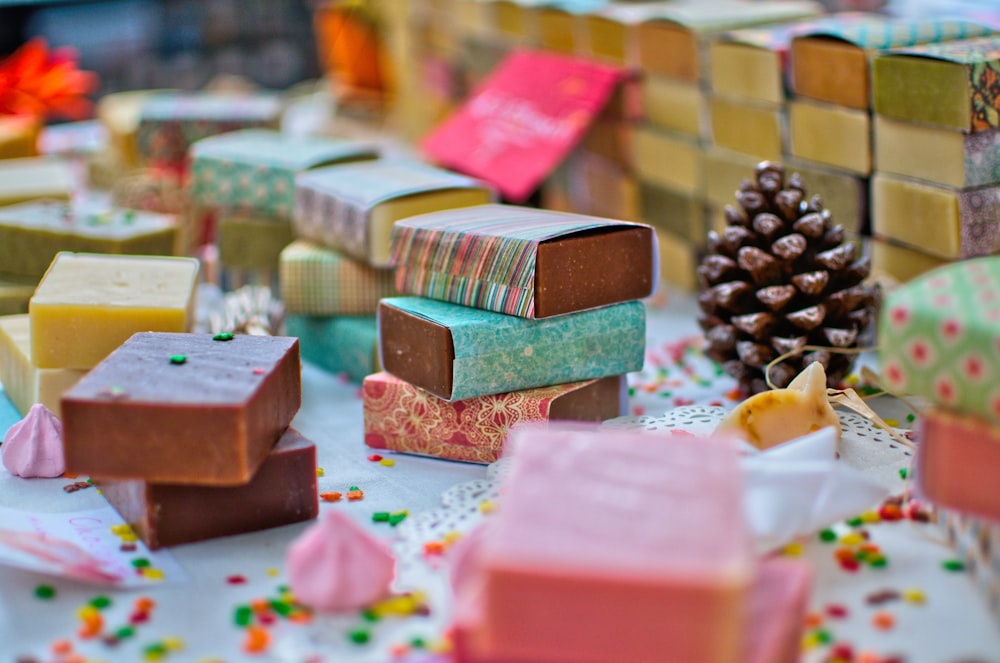 Walking into the skin care aisle at the pharmacy, stepping up to a counter at a department store, or stopping by a cosmetics shop can be an overwhelming experience. Everywhere you look, you see products touting the ideal skin care ingredient. Who knew buying a moisturiser could be so difficult?
Walking into the skin care aisle at the pharmacy, stepping up to a counter at a department store, or stopping by a cosmetics shop can be an overwhelming experience. Everywhere you look, you see products touting the ideal skin care ingredient. Who knew buying a moisturiser could be so difficult?When exploring the vast world of beauty, skincare, and hygiene, there are so many labels and words you've probably heard you should look for on the packaging — and also ones you've heard you should avoid. Phrases like cruelty-free, organic, phthalates, natural, vegan, parabens, nontoxic, and non GMO are all over the place, but can get confusing. One word that's particularly vague is "clean." What exactly is clean makeup, and how important is it to buy clean products?
A basic definition of clean beauty is a product that is safe for human use, and does not include any toxic ingredients. The thing is, the meaning of words like clean, safe, and toxic are not easily defined. Not to mention, there aren't any regulations around the word clean, meaning a company can claim its products are clean, even if they are filled with ingredients that might be unsafe.
Regulatory oversight of cosmetics: A brief history
The clean cosmetics movement seems to have arisen from frustration over regulatory oversight of cosmetics and personal care products (lotions, toothpastes, shampoos, etc). The FDA passed the Federal Food, Drug and Cosmetic Act back in 1938. Yet, ingredients used in cosmetics (with the exception of colour additives) are exempt from FDA regulatory practices. This includes the need for approval or product recall if an ingredient is found to be dangerous. Instead, most regulation of cosmetics comes from the Personal Care Products Council, which is a self-regulating body supported by the cosmetics industry.
 Some took issue with this perceived conflict of interest. Activist groups, including the Environmental Working Group and the Campaign for Safe Cosmetics, took matters into their own hands by classifying certain ingredients found in commercial cosmetic and personal care products as harmful and not suitable for topical use. Online and retail stores followed suit; some sell only clean products, while others have developed speciality lines of clean products.
Some took issue with this perceived conflict of interest. Activist groups, including the Environmental Working Group and the Campaign for Safe Cosmetics, took matters into their own hands by classifying certain ingredients found in commercial cosmetic and personal care products as harmful and not suitable for topical use. Online and retail stores followed suit; some sell only clean products, while others have developed speciality lines of clean products.Each proponent of this movement has developed their own short list of “bad” ingredients. The majority of these chemicals fall into one or more of three major categories: irritants or allergens; potential endocrine disruptors (substances that may imitate our body’s natural hormones and interfere with normal signalling of these chemical messengers); and potential carcinogens (cancer-causing agents).
Irritants and allergens
Commonly avoided in clean cosmetics: Methylisothiazolinone (MI), methylchloroisothiazolinone (MCI), vitamin A derivatives, fragrance, phenoxyethanol, petroleum distillates, and formaldehydes.
What does the science say? MI/MCI, fragrance, and formaldehyde are known causes of contact dermatitis, a poison ivy-like rash that can become chronic with repeated topical exposure. In fact, all three have been named “Allergen of the Year” by the American Contact Dermatitis Society, due to their prevalence in commonly used products and frequent association with contact dermatitis.
Potential endocrine disruptors
Commonly avoided in clean cosmetics: Triclosan and triclocarban, toluene, resorcinol, petroleum distillates, butylated hydroxyanisole (BHA), boric acid and sodium borate, phthalates, placenta extract, parabens, and phenoxyethanol.
What does the science say?
The jury is still out. Many of the studies showing a direct relationship between these compounds and hormonal dysregulation have been performed in animals rather than in humans, and at higher doses than people would typically be exposed to through a cosmetic or personal care product. Some human studies have related an increase in urinary or blood levels of these chemicals to endocrine disruption; however, it is difficult to interpret if or how individual measurements of these chemicals in bodily fluids relate to exposure from cosmetics or personal care products.
Potential carcinogens
Commonly avoided in clean cosmetics: 1,4-dioxane, formaldehydes, coal tar ingredients, petroleum distillates, and placenta extract.
What does the science say?
 Formaldehyde has been named by the National Cancer Institute as a potential carcinogen, and for good reason: it has been linked to cancer formation in both animals and humans at high doses. As if that isn’t enough reason to avoid this product, formaldehyde ranks among the top 10 most common contact allergens. Industrial use of coal tar products has been linked to cancer (for instance, in chimney sweeps); however, coal tar products have been used in dermatology topically, to treat psoriasis and eczema, for years without any increased rate of skin cancer or internal cancers. Petroleum distillates that are highly refined, like those in personal care products or cosmetics, do not appear to cause cancer. 1,4 dioxane has been linked to cancer in animals, while studies about placenta extract are lacking in both animals and humans.
Formaldehyde has been named by the National Cancer Institute as a potential carcinogen, and for good reason: it has been linked to cancer formation in both animals and humans at high doses. As if that isn’t enough reason to avoid this product, formaldehyde ranks among the top 10 most common contact allergens. Industrial use of coal tar products has been linked to cancer (for instance, in chimney sweeps); however, coal tar products have been used in dermatology topically, to treat psoriasis and eczema, for years without any increased rate of skin cancer or internal cancers. Petroleum distillates that are highly refined, like those in personal care products or cosmetics, do not appear to cause cancer. 1,4 dioxane has been linked to cancer in animals, while studies about placenta extract are lacking in both animals and humans.The bottom line
The clean cosmetics movement definitely has us taking a closer look at what we put on our skin, which is a good thing. Scientific evidence appears to support avoiding at least a handful of ingredients that could be lurking in your personal care products, including MI/MCI, fragrance mix, and formaldehyde. Avoiding these ingredients is a good place to start, but you don’t need to toss out your whole makeup bag quite yet: more studies are needed to back up associations between low-dose topical exposure to many of these chemicals and human health.
Because the demand for cleaner, more natural beauty products has risen over the last few years, There are plenty of brands labelling their products as clean, natural, or non-toxic with little evidence to support those claims.
Find brands you trust
Since every "clean" brand has different requirements, it can be helpful to do your research, and find a few brands whose regulations you agree with. That way, you can have a go-to source to use as a starting point when you need a new product.
Look up any unrecognisable ingredients
If you're in the market for a new product, but want to make sure it is safe, look up and research every ingredient on the label.
Make your own products
Buying all-natural ingredients and making things like makeup, lotion, bars of soap, and household cleaning products isn't as hard as it seems! The internet is full of easy-to-follow recipes, and making products from scratch will mean you know exactly what you're putting on your body.
In summary, a "clean" product is one that claims to be made up of safe, non-toxic, and natural ingredients. Whether or not the product is actually safe for your body is up to you to decide. If you only want to use products that meet your personal safety standards, you'll have to take some time to do the research. Your body will thank you.










